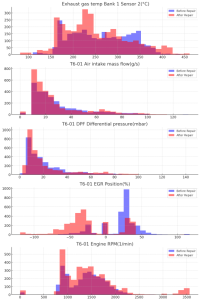Quick update on my quest on finding what the f* is going on with my van :
Now I intermittently get a 'P0191' which is 'Fuel Rail Pressure Sensor Circuit Range/Performance'
I think it's related to my very frequent regens and quick soot buildup in the DPF. Brought it to another garage we'll see ..
Now I intermittently get a 'P0191' which is 'Fuel Rail Pressure Sensor Circuit Range/Performance'
I think it's related to my very frequent regens and quick soot buildup in the DPF. Brought it to another garage we'll see ..





